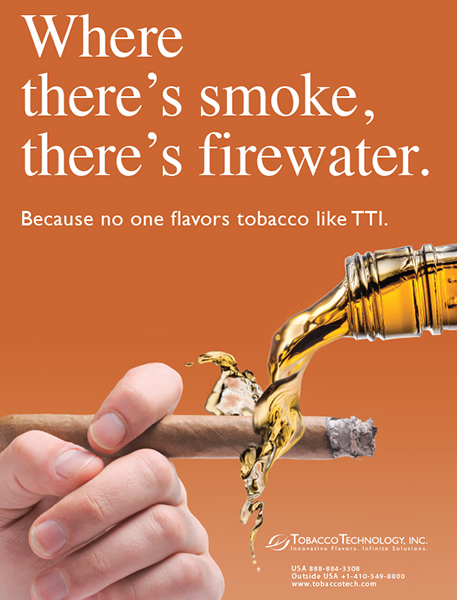
The two camps in tobacco control
By Clive Bates
In November, two major treaties had their Conference of the Parties (COP) meetings. COP26 of the U.N. Framework Convention on Climate Change (UNFCCC) was held in Glasgow, and COP9 of the WHO Framework Convention on Tobacco Control (FCTC) was held online. Both aim to address a globally significant problem, and both aim to achieve radical transformations in the markets for energy and tobacco, respectively.
Yet, the approach differs significantly. There is tremendous pressure in the climate change treaty to eliminate the combustion of fossil fuels to mitigate environmental risk as rapidly as possible. Climate change activists demand a rapid transition to “net zero,” with energy production moving from coal, oil and gas to renewables such as solar, wind and hydro as soon as possible. Arguments rage about the nature of this transformation and the practicality and fairness of the transition needed to reach it. Should it include nuclear power? Should gas substitute coal? Should tree planting count as negative emissions? The climate treaty is all about harm reduction through market transformation. The debate is about the form of eventual transformation and the pathway to reach it.
In tobacco and nicotine, we see a different debate. As with climate change, almost everyone agrees there is a problem. Using WHO figures, smoking causes about 8 million premature deaths annually, and many millions more fall severely ill with various forms of cancer, heart disease and respiratory conditions. But in public health, we are sharply divided into two camps—the transformers versus the abolitionists.
The Transformers
The transformers see the challenge as bringing down the intolerable burden of disease and death as far and as rapidly as possible by changing the nature of the market for nicotine. They point to the Sustainable Development Goal target (SDG 3.4) to reduce noncommunicable disease mortality by one-third by 2030 compared to 2015, and the inevitable future commitments will follow that. The transformers want the market for tobacco and nicotine to move away from combustible smoked products because the smoke causes most of the harm by far. The transformers are found among pragmatists in public health, the investment community and the companies in the nicotine and tobacco market. The challenge for companies is to transform without hurting their shareholders—they need an account of how the business will evolve. Tobacco control activists often say, “just stop selling cigarettes.” But a listed company can only do this through a credible transformation. Without the support of shareholders, executives would be fired, or the company would face a takeover.
Two broad strategies are evident for tobacco companies’ transformation. The first strategy is pursuing noncombustible nicotine product market share and growth in a battle of innovation and consumer appeal. The companies are moving into vaping, pouches, smokeless and heated-tobacco products, with competition as a powerful driver of progress. The question that nags at transformers is whether this move is just a niche line extension or the formative stages of a strategic shift. The companies seem to vary, but they are now being tracked by a Tobacco Transformation Index. The second strategy is more subtle and involves diversification of the companies’ activities. This doesn’t mean buying up unrelated firms, such as food or automotive companies, and creating a conglomerate to dilute the tobacco business. Conglomerates are falling out of fashion, with even the once-mighty General Electric announcing the spin out of its healthcare, energy and aviation businesses. For tobacco companies, diversification must involve synergies—meaning the whole must be greater than the sum of the parts. So, for example, we see tobacco companies exploiting their expertise in plant biotechnology, inhalation science and their consumer insights into non-nicotine psychotropics.

The Abolitionists
The abolitionists have a very different endgame in mind. Their implicit and increasingly explicit goal is to eradicate nicotine use and achieve a “nicotine-free society.” Once it is clear that this is the goal, the dogged opposition to transformation becomes straightforward to explain. Reduced-risk products like snus, vapes, pouches or heated-tobacco products are seen as little more than a lifeline for tobacco companies that would otherwise face imminent obliteration. They are not life-saving alternatives to cigarettes but a cynical nicotine maintenance strategy of Big Tobacco.
There are two problems with the abolitionists.
The first is that there is no evidence that the demand for nicotine is in decline. With at least a 6,000-year history and currently over a billion users, nicotine use remains a very large-scale and deep-rooted phenomenon. There is even less reason to expect declines in demand for nicotine in the future, and we may see the opposite. The main reason smokers give for quitting smoking is that they are experiencing or anticipating harmful health effects. Remove nearly all the harms associated with smoking, and the main reason for quitting nicotine since 1960 has been mostly eliminated. But this is problematic for the abolitionists: To justify the end of nicotine, nicotine use must be harmful. For abolitionists, the problem with much safer nicotine products is that they destroy the rationale for intervention. That is why there is not much interest in coffee and caffeine control. Unsurprisingly, therefore, we see abolitionists pushing contrived science to show these products really are harmful. They have had some success: The European and American public increasingly believes, incorrectly, that smoke-free products are equally or more dangerous than cigarettes, even though they obviously are not.
The second problem with the abolitionist position is that the priority given to eliminating nicotine will mean more harm—more cancer and heart disease. This is because a different guiding priority leads, by design, to different trade-offs. If the goal is ending nicotine use, the abolitionist is more likely to be indifferent to whether someone is vaping or smoking. But those behaviors have very different impacts on health. A thought experiment illustrates the trade-off problem: Hypothetically, would you prefer 20 percent smoking or 10 percent smoking and 30 percent vaping? The second case means twice the nicotine use but half the smoking and much less harm. So while they may see the abolition of nicotine as a pure and uncluttered outcome, it will involve a lot more death and disease in the interim and probably indefinitely. Consider the EU ban on snus, which came into effect in 1991. For the abolitionists, this looks like an incremental step toward their nicotine-free society. To the transformers, it seems like a lost opportunity that puts dogma before health. In the intervening 30 years, how many smokers have been denied the option to almost eliminate their risk while the European Union continues to suffer about 700,000 smoking-related deaths annually? The ban on snus is not a step forward in the march toward a nicotine-free society but a step backward in the imperative to transform the European nicotine market.
Governments are the Real Transformers
In its February 2021 investor day press release, Philip Morris International made a short but remarkable statement about transformation: “The company believes that with the right regulatory frameworks, dialogue and support from civil society, cigarette sales can end within 10 to 15 years in many countries.” The company is saying to investors that its cash-cow—cigarettes—could be obsolete within the typical corporate planning horizon. This is a striking recognition of just how fast things could change if the transformation strategy were pursued purposefully by all parties. The other important idea here is that transformation needs to be a joint undertaking: Governments set the regulatory and fiscal framework. Governments, civil society, health professionals and academia create the “information environment,” shaping what people see, hear and think about their options. Imagine if everyone with a serious stake in public health got fully behind a transformation strategy?
The Abolitionists Fighting Transformation
The abolitionists are threatened by transformation as it will deny them the justification for a nicotine-free society. So they are fighting transformation, with agencies right up to the WHO pressing for the outright prohibition of noncombustible products or regulations that would treat low-risk products no differently than high-risk cigarettes. This approach has nothing to do with health and everything to do with the threat that low-risk products present to the goal of the nicotine-free society. We also see anti-tobacco activists trying to block the diversification strategy of tobacco companies—for example, making the absurd argument they should not even use their biotech capabilities to try to make Covid-19 vaccines. In the most disturbing case so far, activists tried to block tobacco industry diversification through the acquisition of a pharmaceutical company specializing in inhalation technologies. Once the transaction was completed, they threatened the employees with ostracization. One day, these scientists were good guys; the next day, they were bad guys, even though they were doing the same thing with the same purpose—just with different owners.
It’s almost as if these activists need tobacco companies to be permanent cigarette companies and nothing else. Perhaps they need an unambiguously evil enemy that fits their activist business model rather than a transformation that threatens to deny them the reason to exist.












